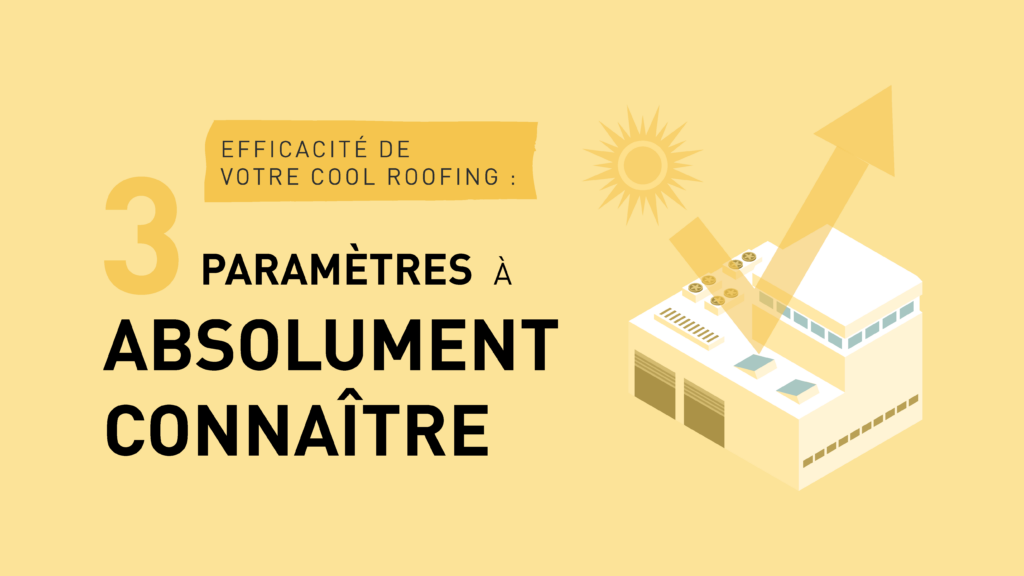Cool roofing represents a crucial strategy in combating excessive heat absorbed by building roofs, playing a key role in reducing energy consumption related to passive cooling. However, to fully assess its effectiveness, it is imperative to understand and apply three essential parameters: emissivity, reflectance, and Solar Reflectance Index (SRI).
These measurements are essential to ensure optimal performance of cool roofing.
Emissivity
The emissivity of a surface determines its ability to emit thermal radiation. This characteristic is evaluated on a scale from 0 to 1, where 0 represents minimal emissivity and 1 represents maximal emissivity.
For effective cool roofing, it is essential to aim for high emissivity. By promoting rapid dissipation of absorbed heat, high emissivity helps maintain lower temperatures inside the building. According to ADEME (French Environment and Energy Management Agency), an emissivity of 0.9 can reduce the surface temperature of the roof by up to 10°C compared to a traditional roof.
Reflectance
Reflectance measures the proportion of solar light reflected by a surface compared to the incident solar light. Also noted on a scale from 0 to 1, high reflectance indicates an increased ability to reduce heat absorption by the roof.
By favoring reflection over absorption of solar light, high reflectance helps maintain cooler temperatures inside the building, thereby reducing the need for air conditioning.
Solar Reflectance Index (SRI)
The Solar Reflectance Index (SRI) is a composite measure that takes into account both the reflectance and emissivity of a surface. Calculated according to ASTM E1980 standard, SRI ranges from 0 to +100. A higher SRI indicates a better ability of the material to reflect solar light and reduce absorbed heat.
The methodology for determining SRI takes into account several factors:
- The angle of incidence of the sun : the sun's position in the sky varies, and the angle at which its rays strike a surface affects the amount of light and heat reflected.
- Albedo : albedo is the proportion of incident solar radiation reflected by a surface.
- Emissivity : emissivity is the ability of a surface to emit heat.
- Ambient temperature : ambient temperature affects the amount of heat a surface can absorb.
The calculation of SRI
Taking into account the values of ASTM E1980 (knowing that the unit °K - Kelvin is the British unit), the formula to calculate the SRI is as follows :
SRI = 100 x (black surface temperature - surface temperature) / (black surface temperature - white surface temperature)
It is important to note that the SRI can exceed 100 for materials that are more reflective than standard white coatings, and it can even be negative for black or very low emissivity coatings, such as metals.
3 indispensable parameters
To optimize the efficiency of cool roof, it is essential to consider these three key parameters: emissivity, reflectance, and SRI. By integrating these measurements into the design, selection, and evaluation of cool roofing materials, owners can choose effective and sustainable solutions.
Optimizing these parameters helps improve the energy performance of buildings, thereby reducing dependence on air conditioning and decreasing carbon footprint. This ensures more comfortable and sustainable indoor environments.



